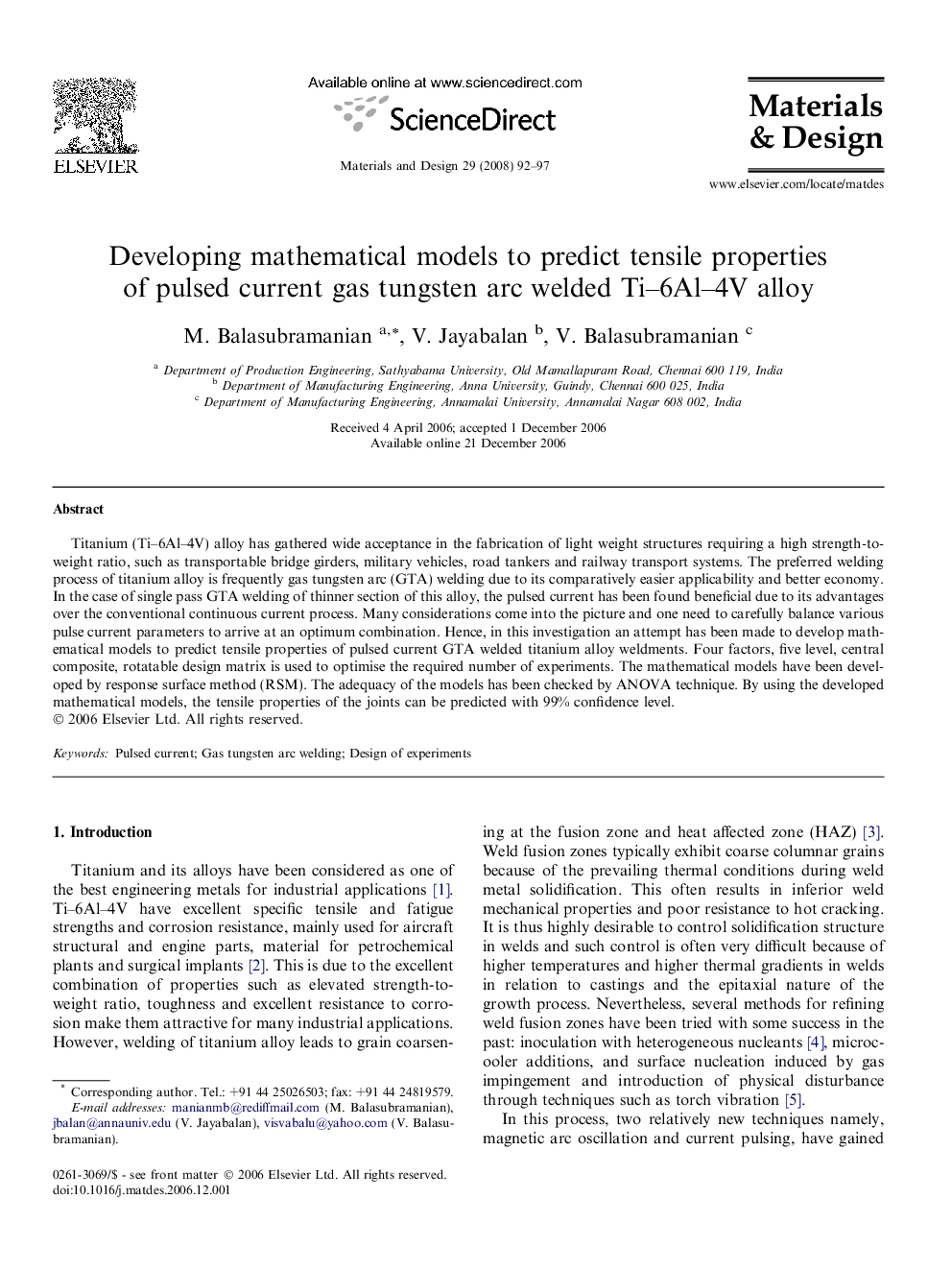| Article ID | Journal | Published Year | Pages | File Type |
|---|---|---|---|---|
| 833235 | Materials & Design (1980-2015) | 2008 | 6 Pages |
Titanium (Ti–6Al–4V) alloy has gathered wide acceptance in the fabrication of light weight structures requiring a high strength-to-weight ratio, such as transportable bridge girders, military vehicles, road tankers and railway transport systems. The preferred welding process of titanium alloy is frequently gas tungsten arc (GTA) welding due to its comparatively easier applicability and better economy. In the case of single pass GTA welding of thinner section of this alloy, the pulsed current has been found beneficial due to its advantages over the conventional continuous current process. Many considerations come into the picture and one need to carefully balance various pulse current parameters to arrive at an optimum combination. Hence, in this investigation an attempt has been made to develop mathematical models to predict tensile properties of pulsed current GTA welded titanium alloy weldments. Four factors, five level, central composite, rotatable design matrix is used to optimise the required number of experiments. The mathematical models have been developed by response surface method (RSM). The adequacy of the models has been checked by ANOVA technique. By using the developed mathematical models, the tensile properties of the joints can be predicted with 99% confidence level.
